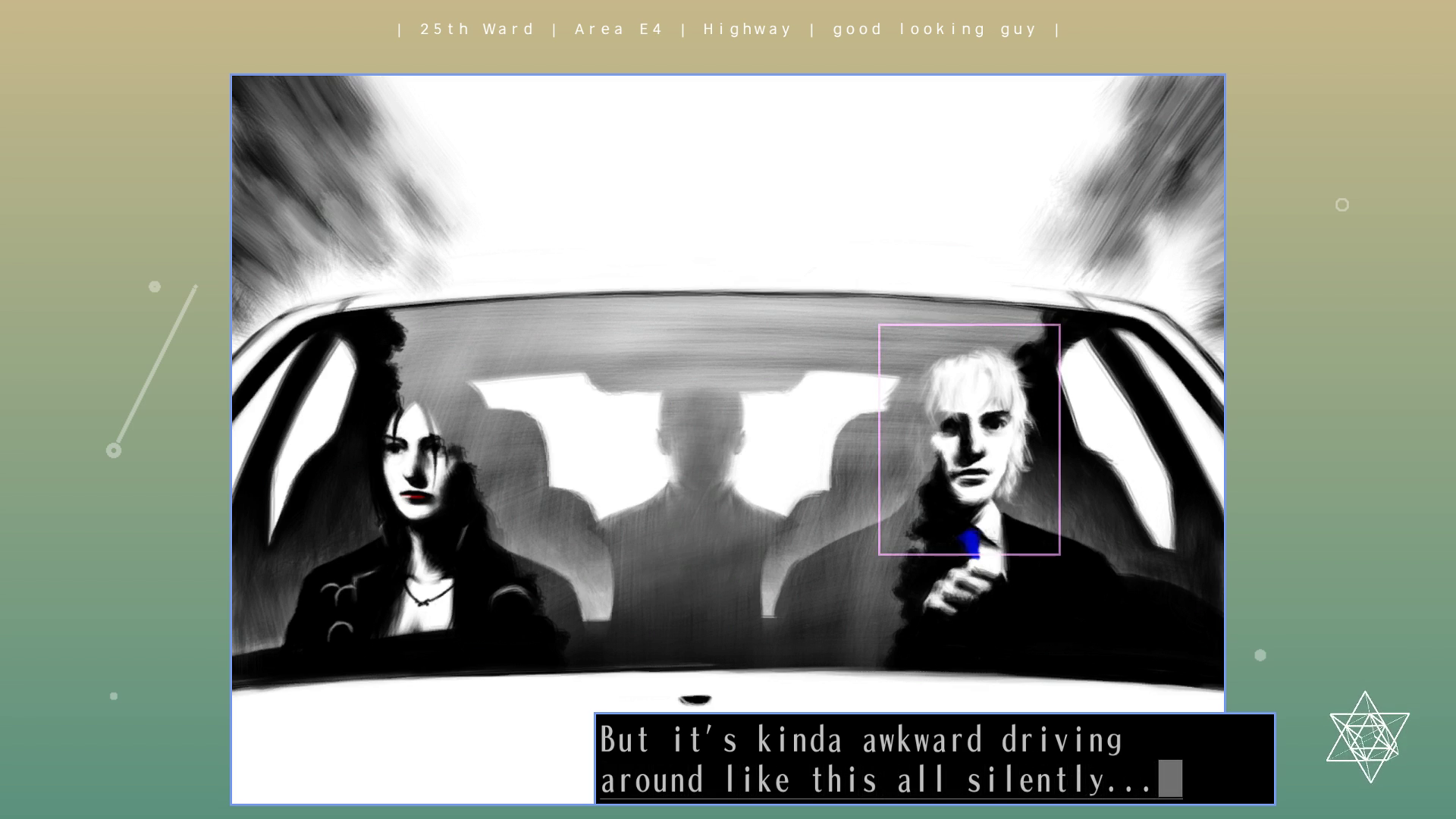If the player tortures themself by reading all of these scenes, a 101st one is unlocked. Uehara suddenly speaks in his own voice for the first time in the series—recall my earlier comment that The Silver Case challenges us to understand the voice of Kamui, the silenced man. Finally speaking, Uehara tries to smooth-talk the player into paying him ¥500,000 yen to fund his revolution, as though it is an addiction the same as Kusabi’s horse race gambling. This ineffective grifter is no liberator killing darkness and giving birth to light.

Uehara is also framed in a comical manner, appearing awkwardly in illustrations with the other characters, who comment that he is scary and quiet. Suda now derives humor from how odd and out-of-place Akira was in The Silver Case by featuring the same role from an outside perspective. Through his scamming, goofiness, ineffectiveness, and robotic obedience to power, Uehara parodies the fifth, fourth, and third Kamuis.
As we will see, an apparently minor detail in No More Heroes III, if read as meaningful rather than as fanservice, will revise Uehara’s role in a surprising way so that he is instead powerful and proactive. But this is not a concern for an analysis of The 25th Ward itself.
***

Also relevant is Shiroyabu Mokutaro, the son of Fujiwara Kamui and Shimohira Ayame. In “MISOGI,” Ayame herself seems to identify Shiroyabu as one of the two Kamuis currently active, referring to two active Kamuis in different factions before an image of Shiroyabu and Tsuki appears on screen (odd because Tsuki is not Kamui-like). Shiroyabu is likely not Shimohira’s biological son but instead the son of one of her victims. Given that they are all Ayames, the distinction is not important here. Instead of carrying on his father’s legacy as a radical artist and symbol of hope, or justifying his mother’s conclusion that “at least I won this child,” Shiroyabu is another disappointment. He is what Enzawa, not Fujiwara, would want. (Also, yet again, the timeline hints at other “facts” because it does not make sense: in 2003, he could not be old enough to join the HC Unit.)
In “YUME” and “AI,” Enzawa predicts Ayame, not Kamui, is key to the future of Kanto. Instead, she lives a comfortable, modest life paying a ¥40,000 rent (how she escaped execution and prison is unexplained), and her progeny is not a radical hero but an abnormally bloodthirsty yet incompetent cop in the 25th Ward HC Unit. Shiroyabu’s striking ability is that, like Euro Maspro kids, he is capable of returning from the dead indefinitely. As with Uehara/Akira, it is ambiguous whether there are “stock bodies” or if he regenerates the same body. Furthermore, inferior even to Sumio, Shiroyabu does not retain the memories of his previous body. Similar to the Parkreiner family’s criminal DNA, this power itself undercuts the messaging of The Silver Case because now criminal power is, in fact, at least partially genetic. (I say partially because traumatic violence is still necessary to death-file him. He does not begin as especially criminal.)